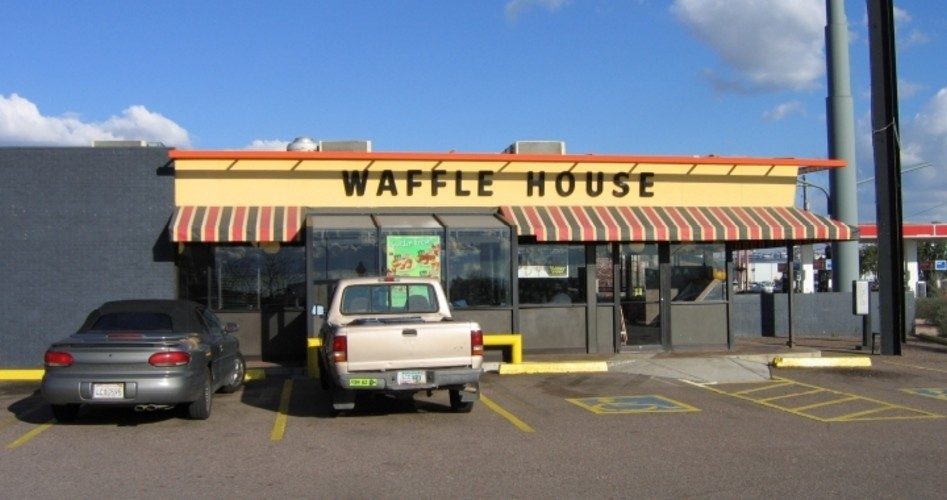
Podcast: Play in new window | Download ()
Subscribe: Android | RSS | More
The “Waffle House Index” flashed red last week as the impact of the coronavirus shutdown really began to bite. The Waffle House restaurant chain is a cultural icon with 2,100 locations, mostly in the South. It is also a leading indicator of the health of the economy. The Federal Emergency Management Agency (FEMA) uses the health of the chain as an indicator for the health of the economy as a whole.
As Craig Fugate, the former head of FEMA, expressed it this way: “If you get there and the Waffle House is closed? That’s really bad.”
The Index has three levels: Green (the restaurants are open, full, and operating with a complete menu); Yellow (they are operating on emergency power, serving only a partial menu); and Red (they are closed).
The chain has closed nearly 400 of its 2,100 restaurants, reflecting what St. Louis Fed President Jim Bullard just announced: “The unemployment rate … is going to be somewhere between 10 percent and … 42 percent.” The lower number is the most optimistic projection of present trends, while the higher number is the most pessimistic. They reflect a minimum of 27 million jobs lost during the shutdown and 67 million at the worst
Neal Boss, the director of public relations for Waffle House, tried to put those numbers into human terms: “To see something of this magnitude and [to] try to explain it in terms of human cost.… We see how it physically affects people through the infection.… There’s the human cost of the very individuals who have been disproportionately affected.”
He added, “Waffle House has a unique culture. It is a culture born of servant leadership, leading from the front and taking care of each other. The fewer customers who have been coming in as things have gotten more and more difficult … has really impacted the number of hours that our hourly associates have been able to glean.”
The “Waffle House Index” tells how the overall economy is faring, according to Dan Stoneking, FEMA’s director of external affairs: “The Waffle House test doesn’t just tell us how quickly a business might rebound — it also tells us how the larger community is faring. The sooner restaurants, grocery and corner stores or banks can re-open, the sooner local economies will start generating revenue again — signaling a stronger recovery for that community.”
The Fed’s projections “do not account for any potential effects of fiscal measures,” said Bullard, “such as payroll support measures for small businesses or changes in the generosity of unemployment insurance that may be implemented [by the government] between now and the end of June.” Fed Chair Jerome Powell told NBC’s Today on Thursday that “if we get the virus spread under control fairly quickly, then economic activity can resume … we want to make that rebound as vigorous as possible.”
The longer the virus threat lasts, and the shutdown in response to it lasts, the greater the chance that a small business that closes will never reopen. In a typical recession, up to 40 percent of small businesses that close never reopen, according to the Insurance Information Institute. But this is hardly a typical recession, but instead is a man-made one. Many are hoping for a “V-shaped” recovery while some are expecting a “U-shaped” one. None are predicting an “L-shaped” one.
Keep an eye on your local Waffle House. When the lights come back on, it’ll indicate that the economy is returning to normal.
Image: Scott / Wikimedia Commons
An Ivy League graduate and former investment advisor, Bob is a regular contributor to The New American, writing primarily on economics and politics. He can be reached at [email protected].


